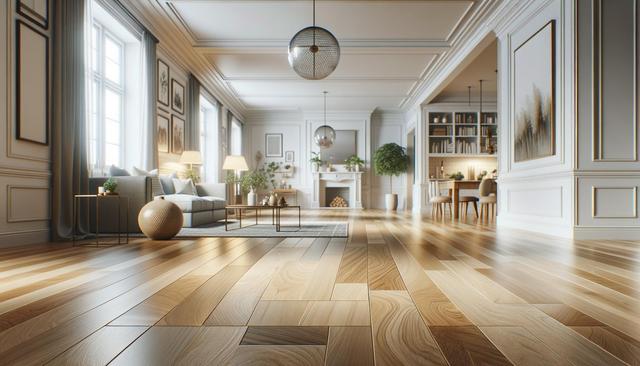Understanding the Types of Hardwood Flooring
When it comes to hardwood flooring, the first step is understanding the different types available. Generally, hardwood floors come in two primary forms: solid and engineered. Solid hardwood is made from a single piece of wood and is known for its longevity and ability to be refinished multiple times. Engineered hardwood, on the other hand, consists of a real hardwood veneer attached to several layers of plywood or high-density fiberboard. This structure makes it more resistant to moisture and temperature changes, making it a suitable option for areas like basements or kitchens.
Popular wood species used in flooring include:
- Oak – known for its strength and traditional grain patterns
- Maple – features a smooth and subtle grain
- Hickory – offers a rustic appearance with strong color variation
- Walnut – prized for its rich, dark tones
Each species has its own character, so your choice should align with both your design preference and the functional needs of your space.
Considerations Based on Room Usage
Not all rooms in a home are used the same way, and this impacts the type of hardwood flooring you should choose. High-traffic areas such as hallways and living rooms benefit from harder woods like oak or hickory, which can handle wear better over time. In contrast, bedrooms and home offices can tolerate softer wood options like walnut or cherry, where foot traffic is generally lower.
It’s also important to consider moisture levels. While hardwood can be installed in kitchens and powder rooms, it’s essential to choose a more stable option like engineered hardwood and ensure proper sealing and maintenance. For areas prone to humidity or spills, you may want to explore finishes that offer added water resistance or opt for a matte texture that hides minor blemishes more easily.
Think also about the floor’s exposure to sunlight—some wood species darken or fade over time. If a room gets abundant natural light, selecting a species and finish that resists UV damage can help maintain its appearance longer.
Style and Aesthetic Impact
Hardwood flooring plays a significant role in your home’s overall aesthetic. The color, texture, and finish you choose should complement your interior design style. Lighter woods like maple or ash can make a space feel more open and modern, while darker options such as walnut or mahogany lend a sense of warmth and sophistication.
There are several finishes and treatment options to consider:
- Glossy finishes – reflect light and can create a luxurious feel
- Matte finishes – offer a more natural appearance and hide scratches better
- Wire-brushed or hand-scraped textures – add character and a rustic touch
Plank width and length also influence the visual effect. Wider planks can make rooms appear larger, while narrow boards contribute to a more traditional look. The layout pattern, such as herringbone or diagonal installation, can further enhance the visual interest.
Durability and Maintenance Requirements
Durability is a key factor when selecting hardwood flooring, especially in homes with pets, children, or heavy furniture. Harder species naturally resist dents and scratches, but the finish applied also plays a significant role in overall resilience. Polyurethane finishes, either oil-based or water-based, provide a protective layer that helps safeguard the wood from daily wear and tear.
Maintenance for hardwood flooring is relatively straightforward but should be consistent to preserve its appearance. Here are some tips to extend the life of your floors:
- Use area rugs in high-traffic zones
- Install felt pads under furniture legs
- Sweep or vacuum regularly to remove abrasive debris
- Use a damp (not wet) mop for cleaning, avoiding excess water
Refinishing may be necessary over time, especially for solid hardwood. This process can restore the surface and extend the floor’s lifespan, making it a long-term investment.
Environmental and Budget Considerations
Responsible hardwood sourcing is a growing concern for many homeowners. Look for flooring that comes from sustainably managed forests, often certified by environmental organizations. Engineered hardwoods typically make better use of raw materials and may be a more eco-conscious alternative.
Cost is another important factor. Hardwood flooring can range significantly in price based on species, finish, and installation complexity. While solid hardwood tends to be more expensive upfront, it may offer greater long-term value due to its ability to be refinished. Engineered options can be more affordable and easier to install, especially over concrete or radiant heating systems.
Additional budget items to consider include:
- Subfloor preparation
- Underlayment materials
- Labor and installation fees
- Ongoing maintenance supplies
Balancing your budget with your aesthetic and functional goals will help you make an informed and satisfying decision.
Conclusion
Choosing hardwood flooring is a significant decision in home decoration that impacts both appearance and function. By considering factors such as room usage, wood type, style preferences, maintenance needs, and environmental impact, you can find an option that fits your lifestyle and enhances your living space. Investing time in research and thoughtful selection will lead to results you can enjoy for years to come.




Leave a Reply